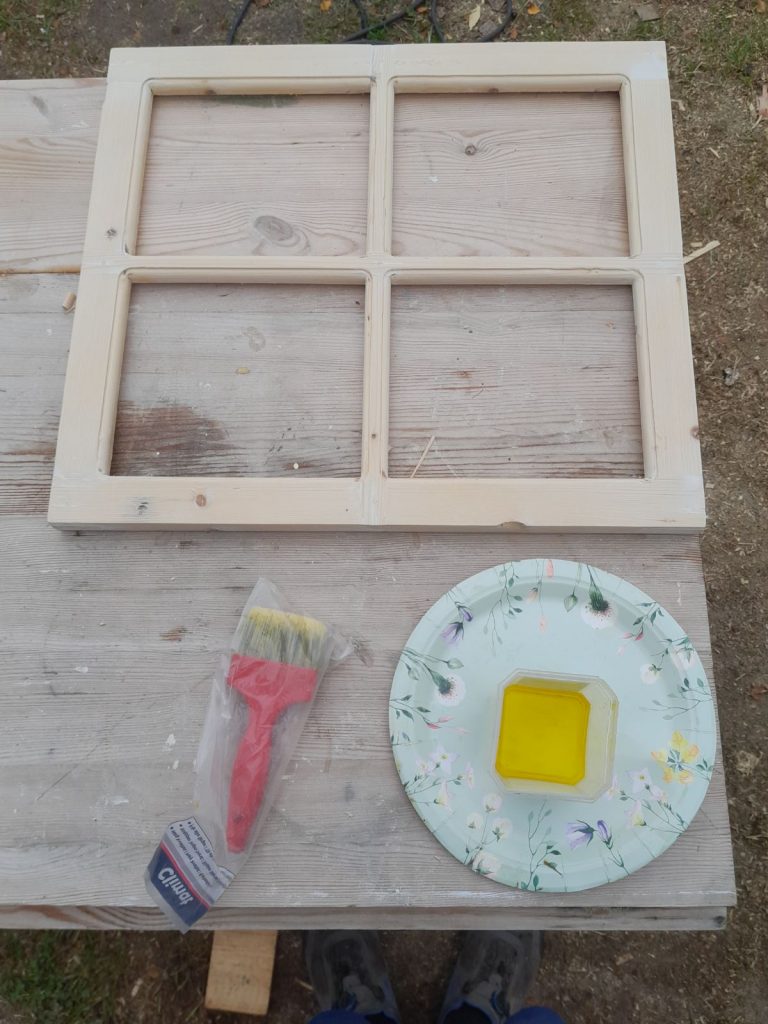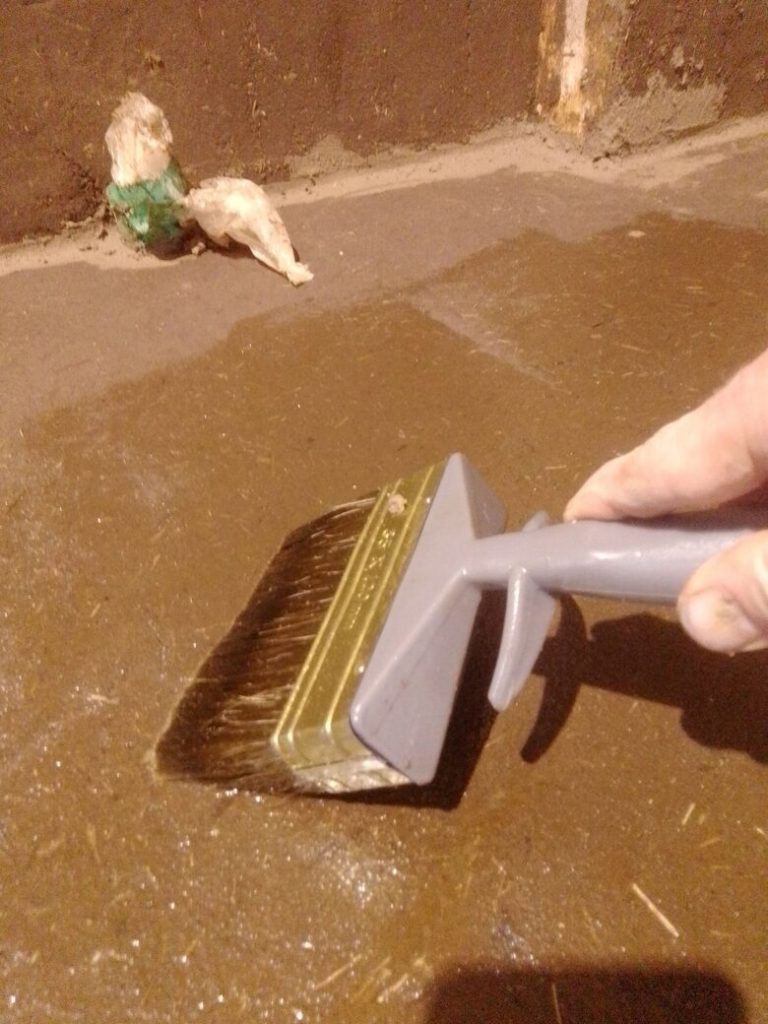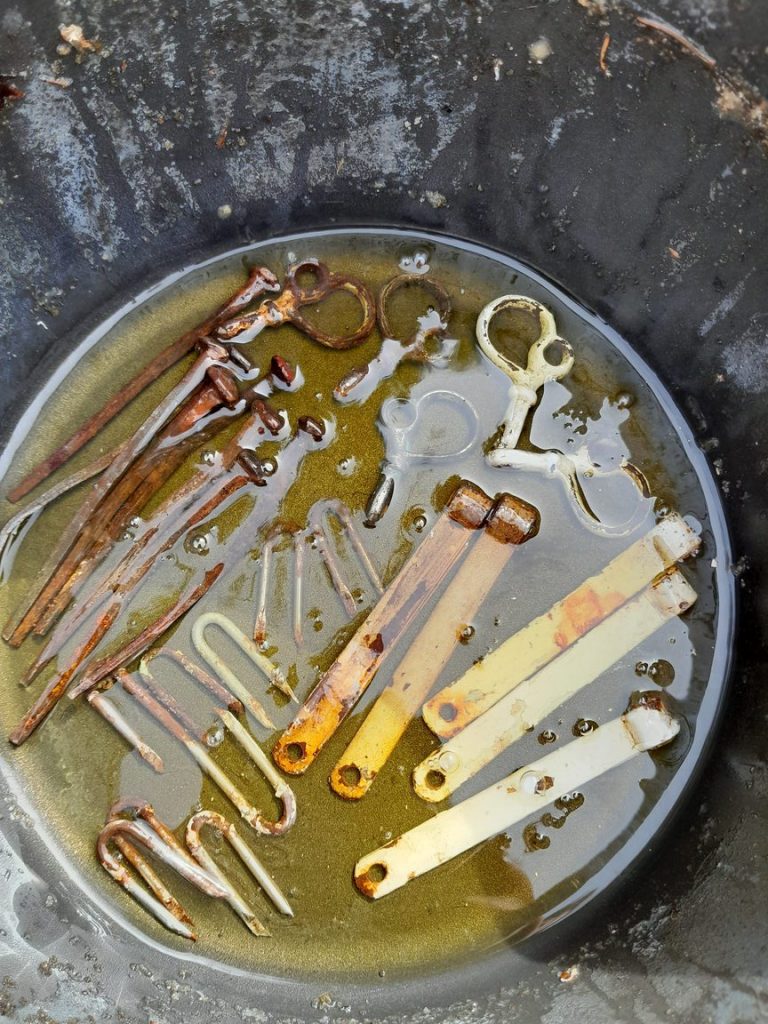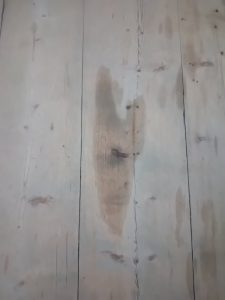What is linseed oil?
Linseed a colourless to yellowish oil obtained from the dried flex seeds, it’s often referred as flaxseed or flax oil. It’s similar to cooking oils in consistency but thicker with a slight pure smell.
Once it dries and oxidises linseed oil has amazing protective properties for materials like wood & even clay (more on that in a bit), and what’s more is it’s totally eco-friendly, safe to apply and easy to use. These reasons are why I almost always have a big canister of linseed oil on hand at home throughout my renovation journey. I’ll be honest, 4 years ago I didn’t even know what linseed oil was let alone that it would become part of my eco-friendly DIY toolkit!
What’s the difference between raw linseed oil and boiled linseed oil?
Linseed oil can be bought “raw” or “boiled”, boiled linseed oil bought as a ready product is actually not boiled but heated with hot air and then additives are added, the main reason for this is it’s meant to make the oxidising process happen faster and therefore it dries faster.
Both often the same level of protection for wood but drying times vary quite a bit, raw linseed oil can take 2-3 days to fully dry whereas boiled linseed oil can take up to 23 hours, so if time is of the essence ready-made “boiled” linseed oil might be your preferred option. For me however, I only ever buy raw linseed oil since I believe it’s how this house wants to be renovated with like for like material and also we use 99% linseed oil based paints in the house which means the drying process can take it’s time and we can still paint over the linseed oil if needed before it’s 100% dry.
Now the confusing bit, you can actually “cook” raw linseed oil as well and this is said to allow the oil to penetrate further into the material and give enhanced protection. If I’m just working with small areas of wood I just apply it “cold” but for larger areas I do “cook” the oil the apply it, more on that below.
What have we used linseed oil for?
Linseed oil has been my go to eco-friendly oil when I need to protect exposed wood or wood that might potentially be exposed to water or the elements and it even penetrates into the core of the wood so it doesn’t just protect the outer wood it protects & nourishes it all. What’s great is linseed oil provides a protective layer over the wood but also allows it to breathe so if moisture does at some point get into the wood it has the chance to dry out unlike for example plastic based paints which basically suffocates wood & traps in moisture!
I’ve used it to protect the base of fence posts, our porch fence pieces, window drip boards, oil a chopping board and most recently as a protective layer on some handmade windows I made for my office and my sons room.

I’ve also used linseed oil as a protective layer for our clay/straw bathroom where the walls are covered in about 1-2cm of clay and the floor made up of 6-7cm of clay with floor heating built-in. As you can imagine a bathroom floor is going to get wet and with 3 children in the house often very well so we really wanted to give the clay some extra protection from both moisture & ware and that’s where the linseed oil came in.
Once the clay was fully dried and set (which took almost 1 week), I applied a thinner finer layer of clay and in that layer I added around half a tea cup of linseed oil, this gave it an oily consistency but also made it easier to work with and form. Once that layer was dry I then applied 2 layers of “cooked” linseed oil (not boiled, cooked) by heating it in a pan on the stove (be careful because although it is safe as you can imagine the oil does get hot) and then quickly applying it to the floor and walls.

The bathroom has no windows or light so we regularly had to air it and set a builders light throughout the drying process. Once the oil was dry the uppermost layer was rock solid and painting with egg oil tempera has given the floor a robust outer shell which 2 years into living in the house is standing up to the job!!
I’ll be doing a full write up about the clay bathroom process in the near future so join the newsletter to get updated when that goes live!
I’ve even used raw linseed oil as a metal cleaner on old nails as well as chainsaw chain lubricant, it’s thicker consistency actually makes it work better than a lot of branded chainsaw oils I’ve found!!

As well as the pure oil you can also buy linseed oil soap which is great for cleaning around the home in eco-friendly, chemical-free manner and if you have old wooden floors like we do scrubbing them once a year or so with linseed oil soap really brightens & brings them back to life!
How do you treat wood with linseed oil?
As mentioned, it’s safe & simple to use, basically brush it on with a liberal layer and let it dry, for very exposed wood or very dry wood you can even do multiple layers. The wood will feel “slimy” while the oil dries and the drying process will be faster with sufficient air and light.
If you do choose to dry outside make sure you protect the wood/material from the wind as small leaves, dust etc can blow onto the oil while it’s drying and create unwanted textures.
If you’re drying inside protect your floods and other surfaces from any drips or spills as it’s not easy to get out afterwards (see the photo below) and regularly air the room your drying in to aid the oxidisation process. Light is also important so if you have a lack of natural light you might want to consider a builders light in the room, again this helps the oxidisation process.
If you don’t plan to paint the wood afterwards, bare in mind linseed oil does darken the wood, it’s not a wood stain by any means but something to be aware of if you’re going with a natural wood look. If you are painting the wood afterwards, go with a linseed oil based paint to nourish the wood further.

It’s useful to have a damp rag on hand to mop up any drops and spills, although as you can see from this photo it’s tricky to get rid of linseed oil from wood once it’s on. It’s important to get rid of the damp rags in a safe manner afterwards as linseed oil is on certain materials flammable while it dries (more on that below).
Can linseed oil really self-combust?
Short answer is yes! You may have heard linseed oil has certain properties which make it flammable and give it the potential to self-combust while it’s drying although in 4-5 years of using it I have never experienced this.
The science is, as linseed oil oxidises & dries it can produce heat which if left on thin kitchen paper or cotton rags in a confined area can result in fire. This is a real potential issue but taking some simple precautions when using raw or boiled linseed oil and linseed oil based paints can eliminate this potential fire hazard.
While working with linseed oil have a separate metal tin with a lid (absolute not a cardboard box or paper bag) where you put all your damp rags or kitchen roll used to mop up spills and drops then when you’re done working with the linseed oil take the tin to ideally an outside tap and thoroughly soak the rags and kitchen roll in water and fill the tin with some water and apply the the lid tightly. Leave the tin outside away from anything flammable and then dispose of it at your local waste dump, most places have a section for paints and similar materials.
If you want to reuse the rags again you can also hang the rags on a washing line outside as the air will keep them cool while the drying process happens. Once 100% dry you can then reuse the rags on your next linseed oil project.
While the potential fire hazard is a real issue and people have lost homes over it it shouldn’t put you off using linseed oil based products as these relatively simple steps can eliminate the danger.
Why can’t you use boiled linseed oil on oak?
I don’t work with oak, nearly all the wood we have up here in Northern Sweden is pine or similar softwoods but the science behind not using linseed oil on oak is that it’s a porous wood so the oil soaks much deeper into it and therefore takes way longer to dry. This slower drying process gives the opportunity for mould to develop and grow, kind of like a sponge and mould isn’t something you want to promote into your home for obvious reason.
Which linseed oils I recommend?
Basically you want pure linseed without any preservatives at all then you know you’re getting a clean natural product which wood (or clay) will be nourished and protected by.
I’ve bought in bulk locally and online, if you’re looking online Nordicare offer a great linseed oil made in Denmark with 100% pure linseed oil with no preservatives and in different sized cans so if you’re just working with finer carpentry a 500ml can will go quite a long way!
If you’re wanting quicker drying times Sunnyside offer a boiled linseed oil (& raw linseed oil) which has a drying time of 12-14 hours and gives a slick glossy finish.